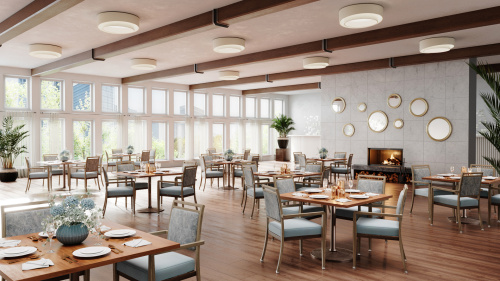Today’s business travelers are largely Gen X and Gen Y, having grown up in coffee shops and with technology always at their fingertips. Whether they’re staying at hotels as individuals or as part of conferences or other group meetings, they prefer to meet and work in public rather than in their rooms. This preference requires space that is different from a hotel’s traditional lobby, bar and restaurant public spaces.
The industry is responding, providing lobbies that create a welcoming first impression and improve hotel functionality. “ The old hotel lobby was not considered a revenue-generating space,” says Carl Ross, president of El Segundo, CA-based Design Group Carl Ross. “It used to hold sofas, side chairs, lounge chairs and the odd ottoman.” The evolving needs of contemporary business travelers are transforming lobbies into profitable and flexible work destinations. “Lobbies contain furniture that facilitates people working together in varying degrees of privacy or social use, including sectionals, high-top tables and furniture that rearranges for different-sized groups,” he observes.
“Lobbies are being transformed into different kinds of zones to provide travelers sufficient privacy so that they feel they are ‘alone together.”
Dr. Stephani Robson, a senior lecturer for
the School of Hotel Administration at Ithaca, NY-based Cornell University
Different Zones for Different Needs
The zones afford business travelers the opportunity to meet, eat, drink, socialize and work (sometimes in two or three combinations of the above) as required with access to power and WiFi to stay connected on their laptops and hand-held devices.
There are 6 types of lobby zones, each serving a different purpose.
1. ON-THE-GO ZONE
2. QUIET ZONE
3. SOCIAL ZONE
4. DINING ZONE
5. PAY-TO-MEET ZONE
6. THE TECHNOLOGY ZONE

